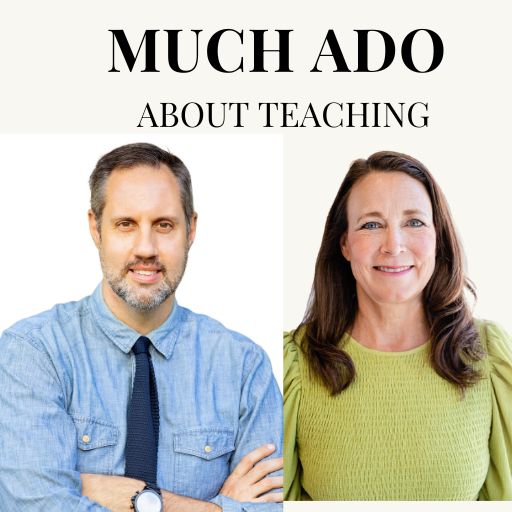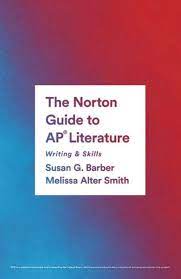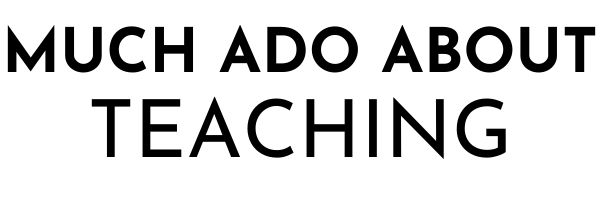Last week a few people gathered for a pilot reading for AP Literature in order to gather projections for how many readers would be needed as well as reviewing the new rubric and questions that may bring up during calibration. Eric Rovie and Adrian Nester on Q1 has shared several takeaways listed here which are very thorough. I have added a few comments; primarily at the end; all of my thoughts are in italics. These are our thoughts and not the law from CB so read accordingly.
Adrian’s Pilot Reading Thoughts:
Understanding the Rubric
General thoughts
Rarely will a 0 in Row A produce anything more than a 0-1 (or maybe a 2) in Row B.
1-2-1 is possible but not probable.
Row A–Thesis
No– The speaker creates a complex portrayal of the landlady through diction, syntax, and imagery. (not defensible, parrots the prompt while only adding devices, can’t just say complexity, must say what is complex)
Yes–The landlady is portrayed to be an observer or stalker. (definsible)
No–The landlady is an alien from outer space. (not defensible)
Yes–The landlady is a monster. (defensibe)
The thesis may be more than one sentence if they are in close proximity.
An example of a sophisticated look at “The Landlady” may look something like this:
“The vehicle of narration–objective and omniscient–delivered to the reader, mimics the Landlady’s desire to be all-knowing regarding her boarders.”
Row B–Evidence and Commentary
Faulty reasoning example–The landlady, through her interactions with her boarders, is able to be more understanding of humanity.
Line of Reasoning
The line of reasoning moves us forward or towards an understanding of the poetry or prose passage.
This clearly is the difference between a score of a 2 or a 3 in Row B.
A sophisticated line of reasoning from “The Landlady” could be that the landlady is increasingly curious which then moves to becoming more sinister in nature.
A weaker line of reasoning could be that the landlady has “stalker-ish” tendencies. Side note: I am going to encourage my students not to use “-ish” in their essays. While is a clever use of a suffix that I appreciate in certain contexts, it makes writing have an immature feel. We will save -ish for our tweets.
Another sophisticated example is passive yet all-knowing presence that both the landlady and boarders possess.
Must support one line of reasoning and continue to develop it to get the highest possible score in row B.
Eric’s Pilot Reading Thoughts:
1. There MUST BE A THESIS. Make it clear and make sure students know what they are saying because…the bulk of the points come from the development of their argument for the thesis (aka the LINE OF REASONING). These thesis should NOT simply restate the prompt. The thesis can come anywhere, but needs to be explicit and defensible.
*Thesis teaching tool: have students highlight their thesis. Have students look for the steps in their LOR to provide evidence for it.
2. A defensible thesis is plausible to a reader and not just a vague idea. “The landlady is an alien” or “the landlady is actually a mother thinking about her actual children” or “the landlady is a serial killer” are not defensible. Students who claim that you can argue anything about a poem because it’s just about how it makes you feel will struggle here.
3. Under the old rubric, there was a line that said “a well written answer can be bumped up one point.” This is no longer the case! (emphasis from Susan)
4. Structure isn’t crucial; the five paragraph essay is not required.
5. In Row B, what will move an essay from a 2 to a 3 or 4 is the development of a coherent LINE OF REASONING. An essay that has no line of reasoning will max out at 2 points on Row B regardless of how well written it is.
6. The Q1 and Q2 will no longer give a suggested list of literary devices.
7. The Q3 will still give a list of suggested works, but literary non-fiction, short stories, and YA books will be permitted.
8. All three questions will feature the same four descriptive bullet points for the sophistication point. These are:
- Identifying and exploring complexities or tensions within the poem.
- Illuminating the student’s interpretation by situating it within a
broader context. - Accounting for alternative interpretations of the poem.
- Employing a style that is consistently vivid and persuasive.
9. There is no comparison from the old to new rubrics. Don’t try to generate one. Begin to think of the scores not as “6” or “4” but as “1-2-0” and “1-3-1”. We were actually encouraged to leave the total number off the paper to move students away from thinking how can I get this paper from a 4 to a 5 and instead think “what do I need to do to get 4 points instead of 3 on evidence and commentary.”
10. The teachers will receive averages for rubric points (“A: .95 B: 2.84, C: .24”). Scores will be broken down row by row which overall will be more useful for teaching and planning.
11. The “Cupcake” Analogy. Think of the rubric as the grading scale for a cupcake. It needs:
a. Actually BE a cupcake and not a pie, sandwich, or fruitcake. This is the THESIS.
b. Once it’s in cupcake form, is it a good example of a cupcake? Does it have the right blend of flour, egg, sugar, etc to be a tasty cake? This is the EVIDENCE and COMMENTARY.
c. The icing and decoration can add a lot to a cupcake. A red velvet cupcake topped with hummus isn’t what you want. This is the SOPHISTICATION point.
12. A score of 0-2-0 seems to be the rarest. No direct thesis with lots of evidence or explanation of what’s going on in the poem is hard to pull off.
13. Scores of 1-2-0 and 1-3-0 seemed most common. SB – agreed. My most common score reading for Q3 was 1-3-0.
SOPHISTICATION POINT: There is no major bullet for getting this. The options for scoring it are based on hitting ONE of four possible marks. Trying to teach students to write to get it might be a fool’s errand; it’s far more useful to focus on Row B. But here are the four marks from least likely to most likely, based on my sample of 350 essays:
1. A style that is consistently vivid and persuasive. This is not easy to find in high school writers. This doesn’t just mean well-written or having a great vocabulary-this means the students writing is almost stunning in its maturity. Out of 350 essays, I saw 1 that fit this description.
2. Accounting for alternative interpretations of the poem. To do this, the student can’t just hand wave at hypothethicals (“one could read the poem another way…”) but needs to engage in this alternative reading throughout. One great essay claimed that, although most people would see the landlady as malevolent, a deep look into her psyche actually reveals her to be lonely and afraid of the emptiness of her house. It looked at all of the same evidence from both sides before settling on a defensible claim.
3. Identifying and exploring complexities or tensions within the poem. Similar to 2, this requires the student take a deep dive into how the language and ideas of the poem could be read in multiple ways. The final stanza’s tension between landlady as “lover” and landlady as “psychologist” is a good set up for a discussion of complexity.
4. Situating the essay in a broader context. This is the easiest avenue for a sophistication point. Students can’t just hand wave or spout platitudes, but need to make the broader context part of the essay. An essay that simply mentions privacy or surveillance won’t get the point, but an essay that compares the landlady’s observant behavior with the lack of privacy found in contemporary society and discusses the willingness to give up freedom for security as evidenced by both her tenants and by Americans in general, might.
SB – Going into the pilot, I thought the #4 path for the sophistication point would equate to the well-written essay point on the old rubric. There’s no bumping scores up for something that is well written, and this is not the same thing as a vivid and persuasive writing in relation to a student’s complex literary argument.
Focus on Evidence and Commentary Row as opposed to Sophistication
I thought I would spend a lot of time with targeted mini-lessons that would help students get the sophistication point since it’s the hardest. Now I realize my time is best spent helping students prepare for Row B. I think if students can grasp what a line of reasoning looks like and are even average readers (for AP Lit students that is), they can earn 3 points in Row B.
In my opinion, the easiest way to get the sophistication point is by discussing the broader context of a work. (Repeat – my opinion).
These are a lot of observations and thoughts about the new rubric and will in turn probably raise a lot of questions. A small number of samples have been scored by this rubric in relation to the large pool of essays written yearly. After the summer reading, there will be a much larger sample base to pull from which will clarify rubric points.
Final takeaway – Good writing is good writing regardless of how it’s assessed. Teaching students how to write well doesn’t change, but rubrics do provide awareness of areas where we may be weak. For example, I realized after the pilot that I’m pretty good at teaching students how to find evidence and provide analysis but need to spend more time helping them develop a line of reasoning. But what I do in terms of teaching writing and reading doesn’t drastically change because the rubric changes. Trust yourself, trust your students, and keep up the good work.
Eric Rovie teaches AP Literature and 10th grade Gifted LA at Brookwood High School in suburban Atlanta, where he also coaches one of the largest girls track teams in the country. He has also taught philosophy and religious studies at the collegiate level (at Washington University in St Louis, Georgia State University, Agnes Scott College, and Saint Leo University) for over a decade and is the author of several articles and books on topics in ethics, and is also a former staff writer for The Onion, PopMatters, and Chunklet Magazine.
Susan Barber teaches at Grady High School in Atlanta, Georgia. In addition to reading, writing, and investing in the next generation, she loves watching college football with her family especially when Alabama is playing. In addition to serving as editor and frequent contributor for APLitHelp, she writes a personal blog Teach with Class.











